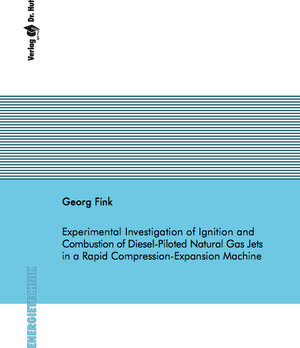Experimental Investigation of Ignition and Combustion of Diesel-Piloted Natural Gas Jets in a Rapid Compression-Expansion Machine
von Georg FinkWith high-pressure dual-fuel (HPDF) combustion, natural gas is injected at high pressure directly into the combustion chamber of a reciprocating engine close to top dead center and is ignited by a small amount of diesel pilot fuel. The direct coupling of mixture formation and combustion allows to prevent methane slip, typically observed with homogeneous-charge natural gas combustion and caused by flame quenching at the cold walls. Even though low emissions and high engine performance have been demonstrated for HPDF combustion, a detailed description of the processes involved and the means to influence them is not available. In the present work, this understanding is generated based on a fundamental investigation of two single fuel jets in a rapid compression-expansion machine. Stable ignition is limited to a certain interaction between the two jets and governed by the ignition characteristics of the bare diesel pilot. Strong interaction between the jets causes pilot fuel auto-ignition to fail. If pilot ignition is successful, the natural gas jet ignition location and initial flame propagation are found to be only marginally affected by the operating conditions, jet arrangement and relative fuel injection timing. As a direct consequence, the heat release rate is influenced only by the degree of premixing of the natural gas jet. The combined analysis of simultaneously progressing mixture, combustion and pollutant formation by experimental and numerical means is used to formulate design objectives. These are successfully applied to the combustion chamber design for a wall-bounded natural gas jet, which is shown to be particularly beneficial at partially-premixed combustion.






